
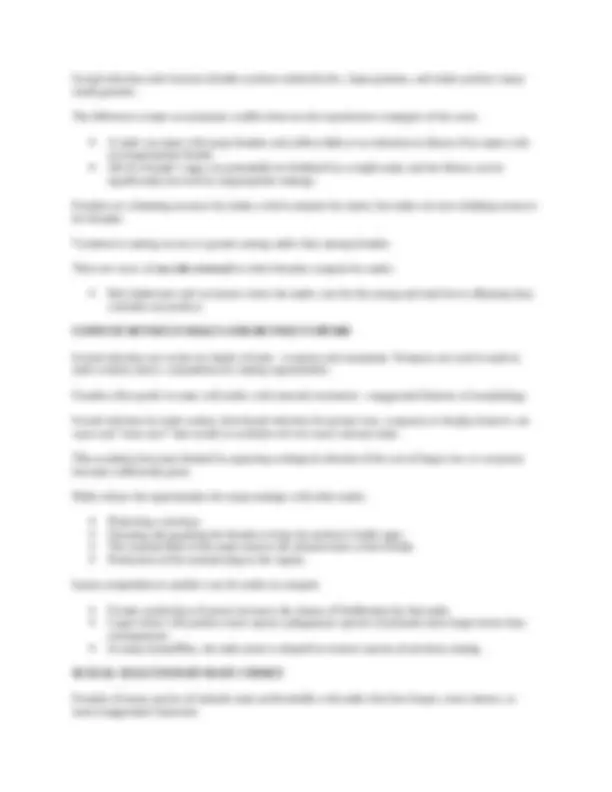
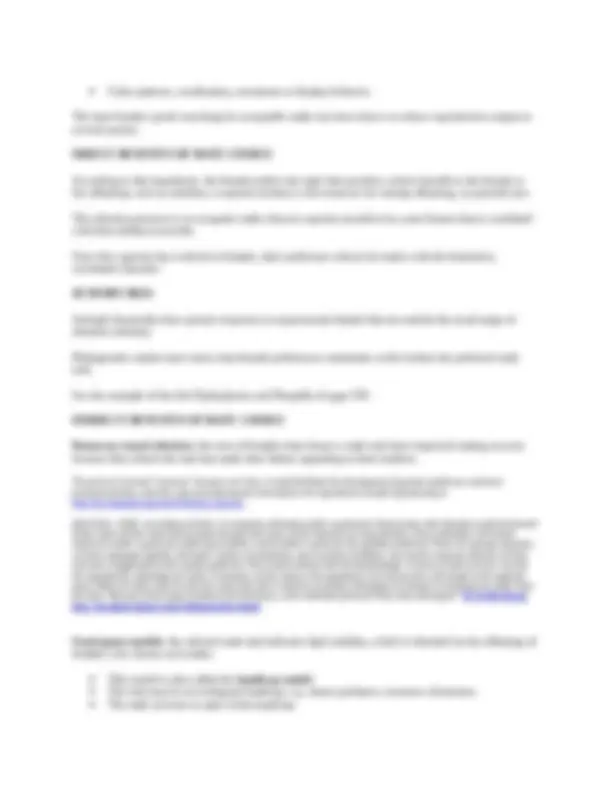
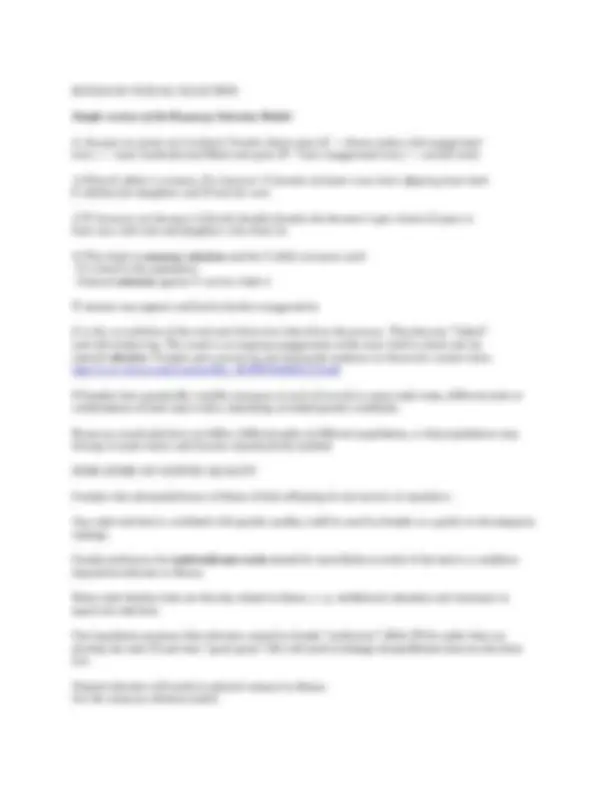
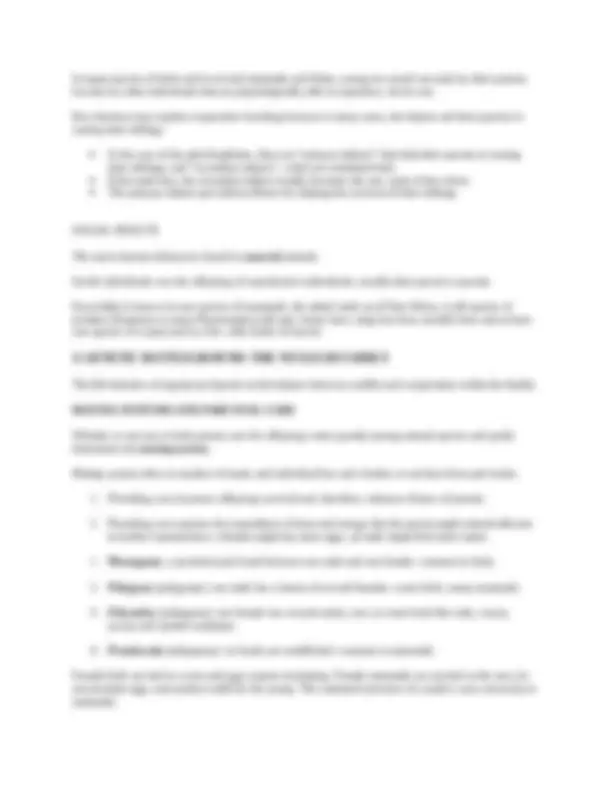
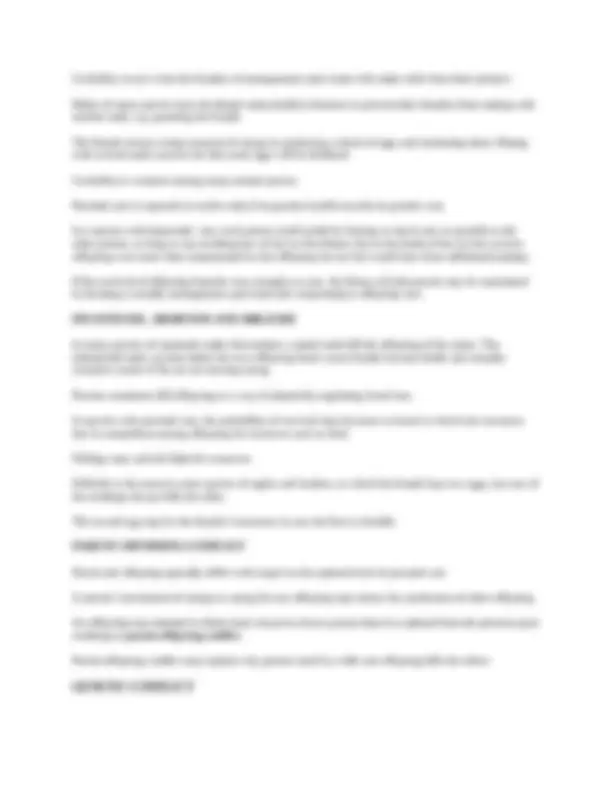
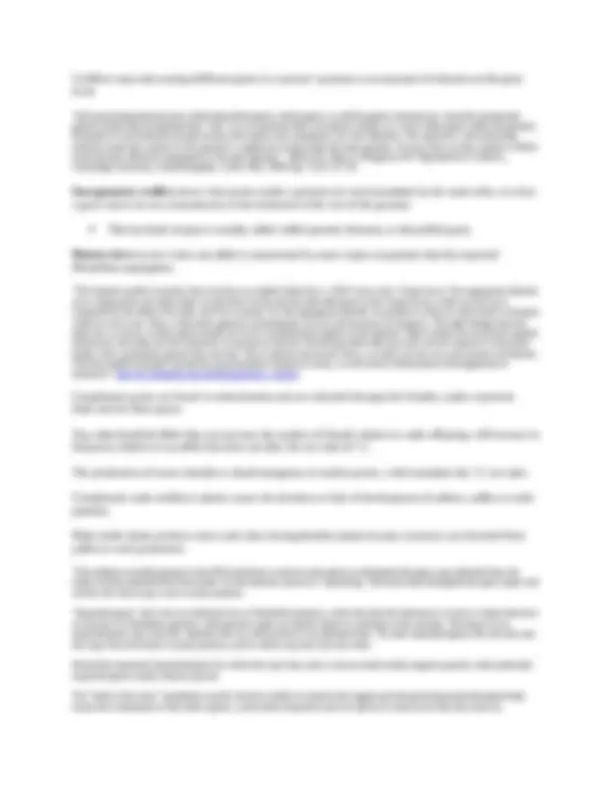


Study with the several resources on Docsity

Earn points by helping other students or get them with a premium plan


Prepare for your exams
Study with the several resources on Docsity

Earn points to download
Earn points by helping other students or get them with a premium plan
Community
Ask the community for help and clear up your study doubts
Discover the best universities in your country according to Docsity users
Free resources
Download our free guides on studying techniques, anxiety management strategies, and thesis advice from Docsity tutors
Material Type: Paper; Professor: Salgado; Class: Evolution; Subject: Biology; University: Christian Brothers University; Term: Unknown 1989;
Typology: Papers
1 / 11

This page cannot be seen from the preview
Don't miss anything!







Thomas Malthus wrote Essay on Population in which he presented the theory that population growth must inevitably cause competition for food and other resources. Darwin was influenced by Malthus’ theory. Conflict has been an essential component of natural selection from the start. Darwin also realized that there is cooperation in nature: cells and organs in organisms, social insects, between mates, etc. Characteristics that benefit the population or species, but no the individual, can evolve only by group selection.
Cooperation and conflict are inherent in many interactions. E. g. Wolves live in pack and benefit from hunting together but the alpha pair aggressively prevents others from reproducing. Cooperative groups are stable if the “attractive” forces are greater than the “repulsive or centrifugal” forces. INCLUSIVE FITNESS AND KIN SELECTION The advantage or disadvantage each lower-level unit derives from a cooperative interaction must be measured by its fitness: its contribution of genes to subsequent generations. Inclusive fitness of an allele is its effect on both the fitness of the individual bearing it ( direct fitness ) and the fitness of other individuals that carry copies of the same allele ( indirect fitness ). “Inclusive fitness encompasses conventional Darwinian fitness with the addition of behaviors that contribute to an organism’s individual fitness through altruism. An organism’s success, from the gene's point of view, ultimately depends on leaving behind the maximum number of replicas of its genes present within a population.” http://en.wikipedia.org/wiki/Inclusive_fitness Inclusive fitness includes kin selection. “…inclusive fitness is defined as an individual’s relative genetic representation in the gene pool in the next generation.” http://brembs.net/hamilton/ Hamilton’s Rule : An altruistic trait can increase in frequency only if the number of extra copies of the allele passed on by the altruist’s beneficiary (ies) to the next generation as a result of the altruistic interaction is greater, on average, than the number of allele copies lost by the altruist.
RB>C Where C is the cost to the actor, R the genetic relatedness between the actor and the recipient and B is the benefit to the recipient. Coefficient of relationship is the probability that two individuals share a give gene because of a descent from a common ancestor. The more distantly related the beneficiaries are to the donor, the greater the benefit to them must be for the allele for an altruistic trait to spread. FREQUENCY-DEPENDENT SELECTION ON INTERACTIONS When an allele is rare, there is little competition and the allele will have greater fitness due to survival. As the allele increases in frequency it becomes less rare and competition increases, and its fitness declines. When the intensity of competition experienced by an average individual of the two genotypes is equal, their fitnesses are equal, and a stable allele frequency is attained. EVOLUTIONARILY STABLE STRATEGIES The evolutionarily stable strategy (ESS) says that if all member of a population adopt a given phenotype, this phenotype cannot be replaced by another one, a mutant phenotype, under the prevailing conditions. Example: An aggressive genotype can always increase in a population of non-aggressive genotypes. When two aggressive individuals meet, if the fitness is greater than the injury, the winner is an ESS. If the injury is, however, greater, then ESS shows that a “pure” aggressive can be replaced by a “mixed” in which it will fight or retreat depending on the conditions. Optimal behavior is variable depending on the conditions.
Both mating partners have a genetic interest in the production and welfare of their offspring. If the mates are unrelated, neither has any genetic interest in the other’s survival or reproductive success with other partners. Forms of sexual selection proposed by Darwin: Male to male combat: it is usually males who fight. Mate choice: usually female choice of male mates. Other forms recognized today by biologists see list on page 330, Table 14.1.
Color patterns, vocalization, ornaments or display behavior. The time females spend searching for acceptable males has been shown to reduce reproductive output in several species. DIRECT BENEFITS OF MATE CHOICE According to this hypothesis, the female prefers the male that provides a direct benefit to the female or her offspring, such as nutrition, a superior territory with resources for rearing offspring, or parental care. The selection pressure is to recognize males that are superior providers by some feature that is correlated with their ability to provide. Once this capacity has evolved in females, their preference selects for males with the distinctive, correlated character. SENSORY BIAS Animals frequently show greater responses to supernormal stimuli that are outside the usual range of stimulus intensity. Phylogenetic studies have shown that female preferences sometimes evolve before the preferred male trait. See the example of the fish Xiphophorus and Pieapella of page 333. INDIRECT BENEFITS OF MATE CHOICE Runaway sexual selection : the sons of females that choose a male trait have improved mating success because they inherit the trait that made their fathers appealing to their mothers. The process is termed "runaway" because over time, it would facilitate the development of greater preference and more pronounced traits, until the costs of producing the trait balance the reproductive benefit of possessing it. http://en.wikipedia.org/wiki/Fisherian_runaway (RA Fisher, 1958): According to Fisher, if a majority of females prefer a particular kind of male, other females would be favored if they mate with the same kind of males because their sons will be attractive to many females. Every individual will tend to inherit its mother’s genes for preferring its father, and its father’s genes for the qualities preferred. These two (groups of) genes will then segregate together and under certain circumstances, due to positive feedback, may lead to runaway selection of more and more exaggeration of the quality preferred. This would continue until the disadvantage, in terms of male survival, exceeds the reproductive advantage for males. Eventually, all the males in the population will end up with a tail length at the optimum point. When all males come to have the same trait, there would be no genetic advantage to a female in choosing one rather than the other. Because of this major problem with this theory, more elaborate forms of it have been developed.” M.Tevfik Dorak, http://dorakmt.tripod.com/evolution/sselect.html Good genes models : the referred male trait indicates high viability, which is inherited by the offspring of females who choose such males. This model is also called the handicap model. The trait may be an ecological handicap, e.g. attract predators, increases clumsiness. The male survives in spite of the handicap.
Simple version of the Runaway Selection Model: A. Assume two genes are involved: Female choice gene ( C = choose males with exaggerated trait, c = mate randomly) and Male trait gene ( T _= have exaggerated trait, t = normal trait)
_- It is fixed in the population
Some argue that group selection is weaker than individual selection. THEORIES OF COOPERATION AND ALTRUISM MANIPULATION A donor may dispense aid to a recipient not because it is adaptive, but simply because it is being manipulated. e.g. brood-parasitic birds, cuckoldry. INDIVIDUAL ADVANTAGE Cooperative behavior evolves simply because it is advantageous to the individual. Joining a flock or herd provides protection from predation owing to safety in numbers. Birds at the center of the flock are using the others as shield against predators. RECIPROCATION It can be advantageous for an individual to help another if the recipient will provide reciprocal aid in the future. This is called reciprocal altruism. Reproductive skew models are evolutionary models that predict how direct reproduction is partitioned between dominants and subordinates in animal societies. Dominant breeding females have been thought to subdue the reproductive activities of subordinate females to optimize their own fitness. Optimal skew or concessions theory predicts that if disgruntled subordinates decide to leave the group, the dominant female will offer them reproductive rights as a concession to induce them to stay. INTERACTION AMONG RELATED INDIVIDUALS KIN RECOGNITION AND CANNIBALISM Many species of animals are cannibalistic, preying on smaller individuals of the same species or on relatively defenseless life history stages, such as eggs. Many of such species differentiate kin from non-kin. Omnivores associate more with their siblings than with others. Carnivores eat siblings less frequently than unrelated individuals. COOPERATIVE BREEDING
In many species of birds and in several mammals and fishes, young are reared not only by their parents, but also by other individuals that are physiologically able to reproduce, but do not. Kin selection may explain cooperative breeding because in many cases, the helpers aid their parents in rearing their siblings. In the case of the pied kingfisher, there are “primary helpers” that help their parents in rearing their siblings; and “secondary helpers”, which are unrelated birds. If the male dies, the secondary helper usually becomes the new mate of the widow. The primary helpers get indirect fitness by helping the survival of their siblings. SOCIAL INSECTS The most extreme altruism is found in eusocial animals. Sterile individuals rear the offspring of reproductive individuals, usually their parent or parents. Eusociality is known in one species of mammals, the naked mole rat of East Africa, in all species of termites (Isoptera), in many Hymenoptera (all ants, honey bees, sting less bees, bumble bees and at least one species of wasps) and in a few other kinds of insects.
The life histories of organisms depend on the balance between conflict and cooperation within the family. MATING SYSTEMS AND PARENTAL CARE Whether or not one or both parents care for offspring varies greatly among animal species and partly determines the mating system. Mating system refers to number of mates and individual has and whether or not they form pair bonds.
Conflicts may exist among different genes in a species’ genome as an outcome of selection at the gene level. “Self-promoting elements (also called ultraselfish genes, selfish genes, or selfish genetic elements) are vertically transmitted genetic entities that manipulate their "host" so as to promote their own spread, usually at a cost to other genes within the genome. Examples of such elements include meiotic drive genes and cytoplasmic sex ratio distorters. The spread of a self-promoting element creates the context for the spread of a suppressor acting within the same genome. We may thus say that a genetic conflict exists between different components of the same genome.” Hurst LD, Atlan A, Bengtsson BO. Department of Genetics, Cambridge University, United Kingdom. Q Rev Biol. 1996 Sep; 71(3): 317-64. Intragenomic conflict arises when genes inside a genome are not transmitted by the same rules, or when a gene causes its own transmission to the detriment of the rest of the genome. This last kind of gene is usually called selfish genetic element, or ultraselfish gene. Meiotic drive occurs when one allele is represented by more copies in gametes that the expected Mendelian segregation. “The simplest model of meiotic drive involves two tightly linked loci: a Killer locus and a Target locus. The segregation distorter set is composed by the allele Killer (in the Killer locus) and the allele Resistant (in the Target locus), while its rival set is composed by the alleles Non-killer and Non-resistant. So, the segregation distorter set produces a toxin to which itself is resistant, while its rival is not. Thus, it kills those gametes containing the rival set and increases in frequency. The tight linkage between these loci is crucial, so these genes usually lie on low recombination regions of the genome. Other systems do not involve gamete destruction, but rather use the asymmetry of meiosis in females: the driving allele ends up in the ovocyte instead of in the polar bodies with a probability greater than one half. This is termed true meiotic drive, as it does not rely on a post-meiotic mechanism. The best-studied examples include the neocentromeres (knobs) of maize, as well several chromosomal rearrangements in mammals.” http://en.wikipedia.org/wiki/Intragenomic_conflict Cytoplasmic genes are found in mitochondria and are inherited through the females; males represent dead-end for these genes. Any mitochondrial allele that can increase the number of female relative to male offspring will increase in frequency relative to an allele that does not alter the sex ratio of 1:1. The production of excess females is disadvantageous to nuclear genes, which maintain the 1:1 sex ratio. Cytoplasmic male sterility is plants causes the abortion or lack of development of anthers, pollen or male gametes. Male sterile plants produce more seeds than hermaphroditic plants because resources are diverted from pollen to seed production. “The addition of methyl groups to the DNA backbone is used on some genes to distinguish the gene copy inherited from the father and that inherited from the mother. In this situation, known as "imprinting," the marks both distinguish the gene copies and tell the cell which copy to use to make proteins. "Imprinted genes" don't rely on traditional laws of Mendelian genetics, which describe the inheritance of traits as either dominant or recessive. In Mendelian genetics, both parental copies are equally likely to contribute to the outcome. The impact of an imprinted gene copy, however, depends only on which parent it was inherited from. For some imprinted genes, the cell only uses the copy from the mother to make proteins, and for others only that from the father. Maternally-expressed imprinted genes (for which the copy from mom is always used) usually suppress growth, while paternally expressed genes usually enhance growth. The "battle of the sexes" hypothesis is partly based on studies in animals that suggest growth-promoting imprinted genes help ensure the continuation of the father's genes, a particularly important issue for species in which more than one male can
contribute to a single litter of offspring. The mother, however, is more interested in maintaining her own health, biologically speaking, and hence her genes "fight" the paternal genes and limit the size of the embryo or fetus.” Joanna Downer. http://www.hopkinsmedicine.org/press/2002/November/epigenetics.htm Other resources: